Concrete is everywhere. Today, it is the single most widely used material in the world. Massive and sculptural, bringing raw beauty to any home, it is an essential material for contemporary architects to use.
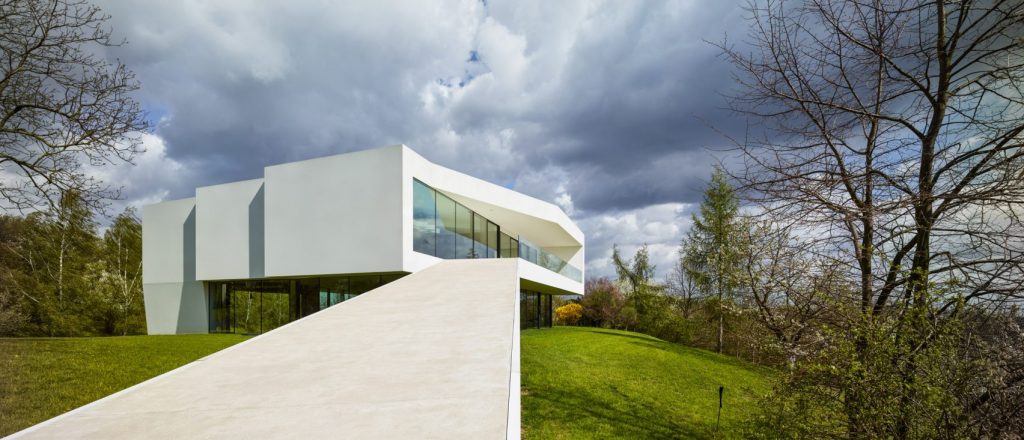
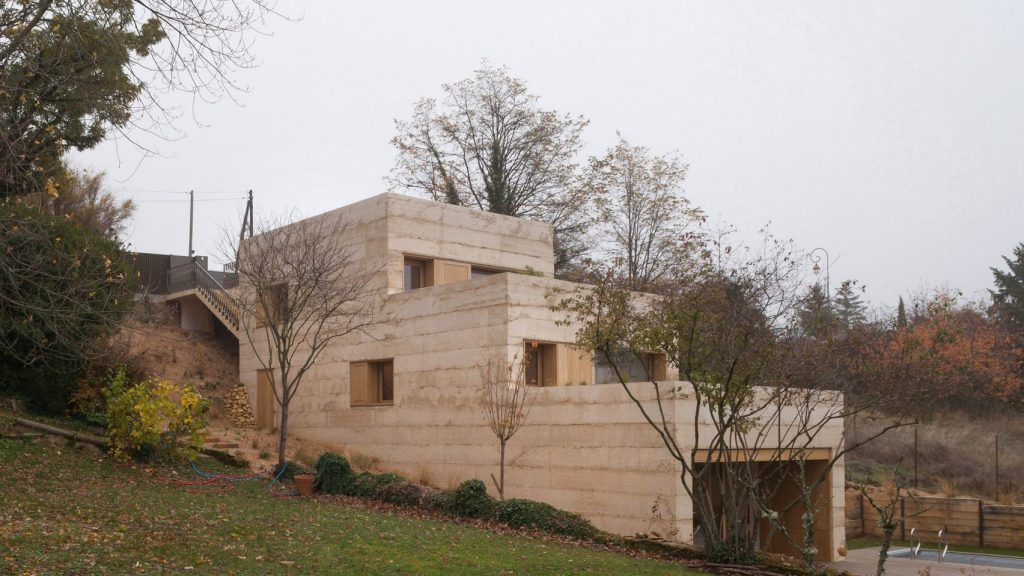
P House by Tectoniques Architetectes in Lyon
Inspired by the geography of the site in Saint-Cyr-au-Mont-d’Or, France, local architecture studio Tectoniques has fabricated a semi-hidden house with a rugged exterior that seems to be emerging from the slope.
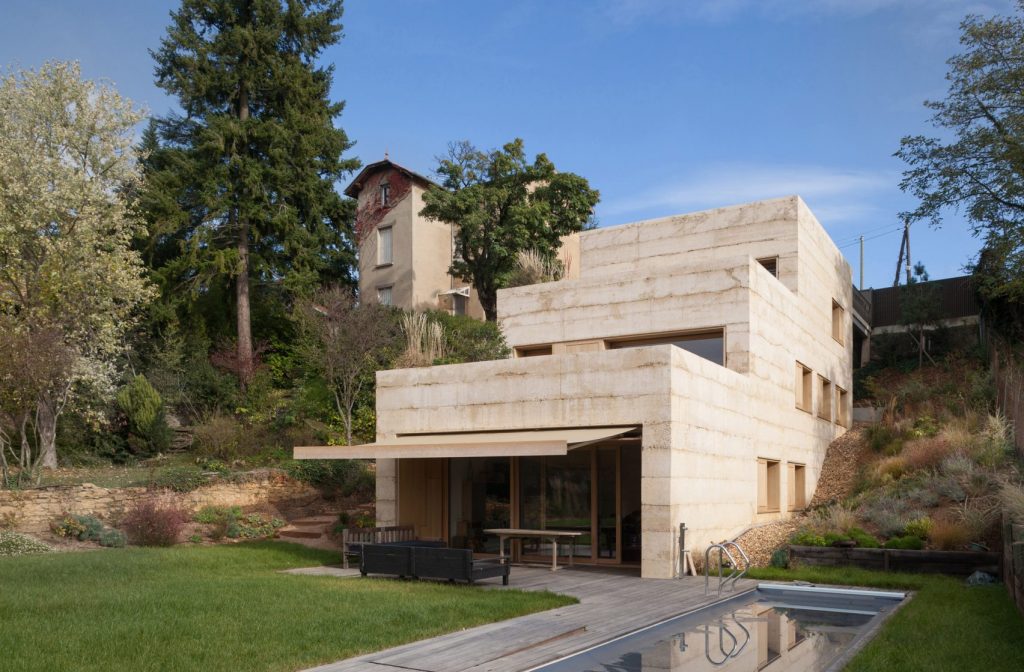
P House by Tectoniques Architetectes in Lyon
Dubbed P House, the building is fabricated from a specially developed concrete, which is made using coarse aggregate and less water than standard concrete. To echo the hue of the existing 19th-century building on the plot, the designers added ochre dyes to the white concrete of the façade. In order to create a rough, imperfect finish, the concrete is vibrated – shaken to release air bubbles – manually.
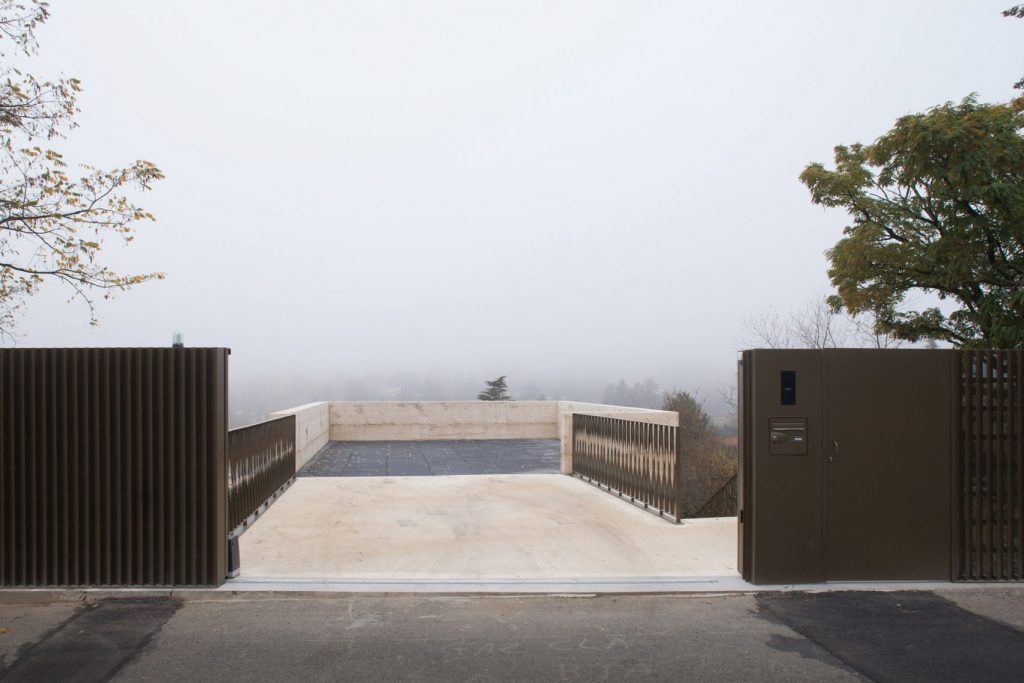
P House by Tectoniques Architetectes in Lyon
Inside, the house has three floors, its top one being level with the road. It is the only part of the building that can be seen from the road, with the buried underground volume of the residence much greater than the visible volumes. The iceberg-style house slowly reveals itself as upon entering it from the road the visitor descends an exterior staircase. This is followed by two internal ones, which connect the road with the garden through a pathway that showcases all the levels of the building. The master bedroom, children’s bedrooms, and living spaces are all situated on the lower levels.
Concrete was also used for the interior, endowing the ‘disappearing’ house with strong materiality.
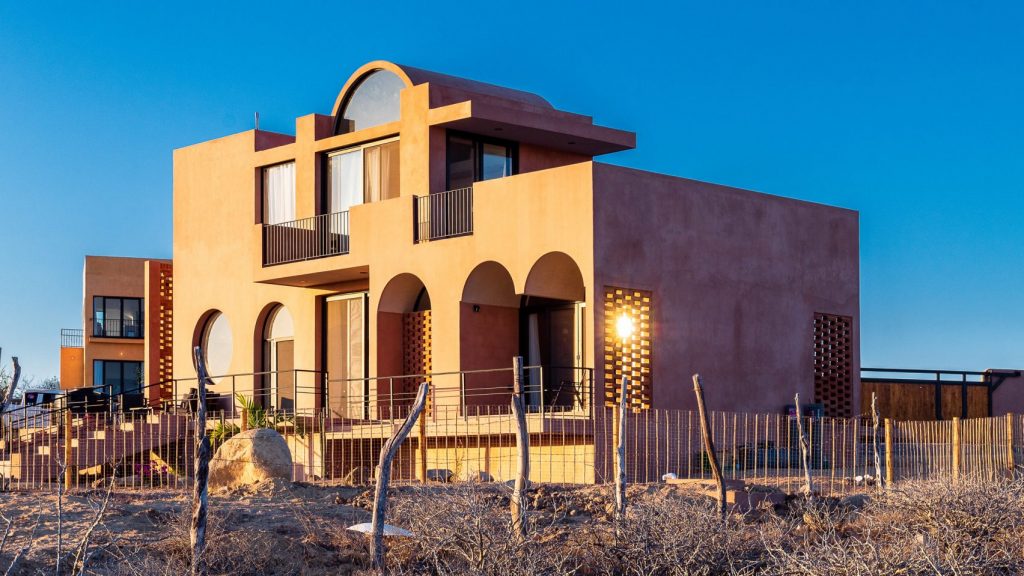
Casa Calafia in Mexico by Red Arquitectos
An American couple commissioned Mexican studio RED Arquitectos to complete their holiday home, which is named Casa Calafia after a mythical warrior queen who was first mentioned in the 1500s novel Las Sergas de Esplandián (“The Adventures of Esplandián”) by Spanish poet Garci Rodríguez de Montalvo. Inspired by the image of the powerful female icon signifying abundance, the architect developed a language of curved openings and sculptural geometry for the two-storey 200sqm house.
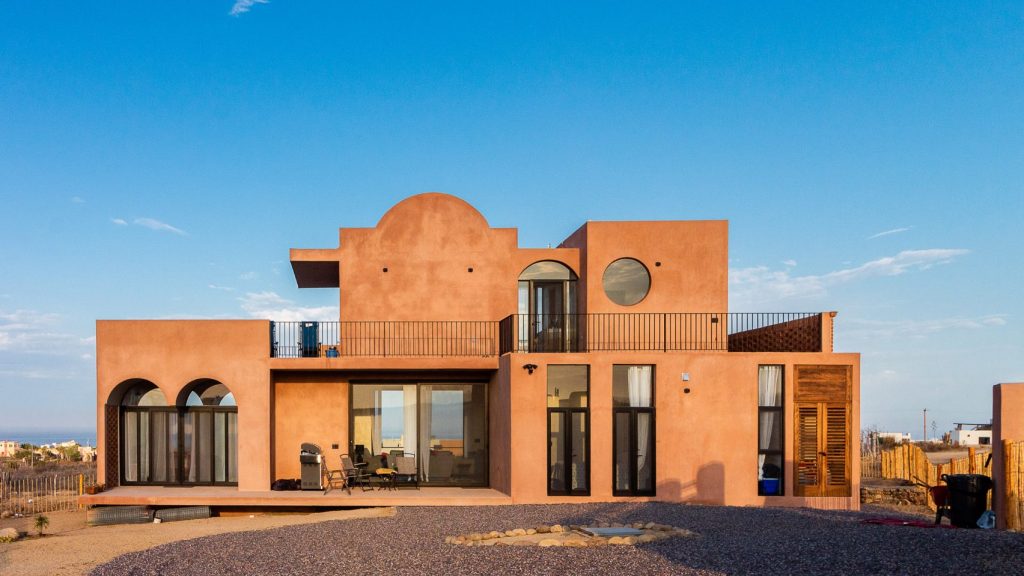
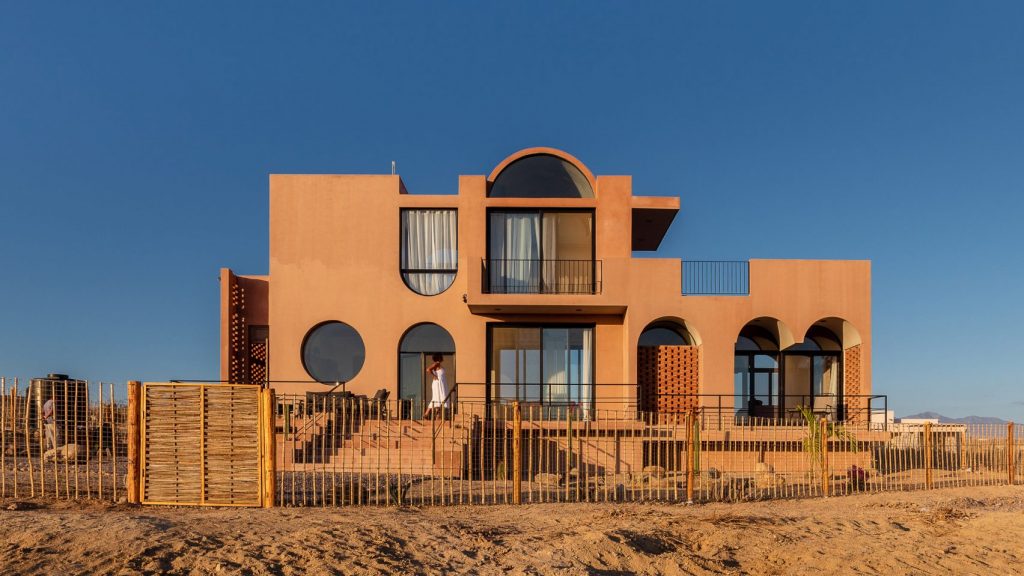
Casa Calafia in Mexico by Red Arquitectos
Described by the architect as a “monolithic sculpture,” the house is built with concrete block, since it is the most accessible material in the area, and its exterior and interior are covered with cement and natural pigments, lending the project a natural, uniform hue. The residence’s geometric architectural shapes are particularly pronounced at night
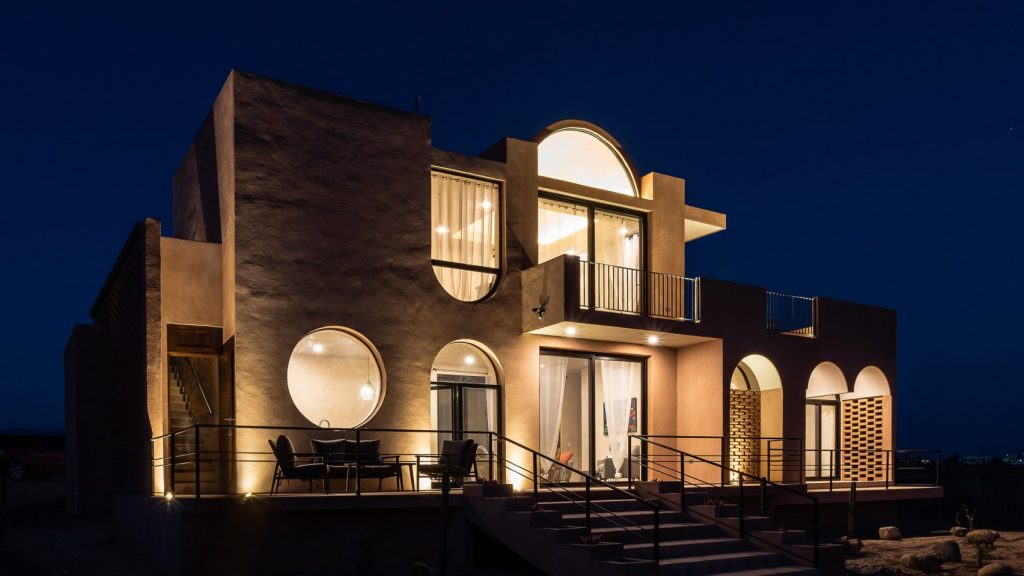
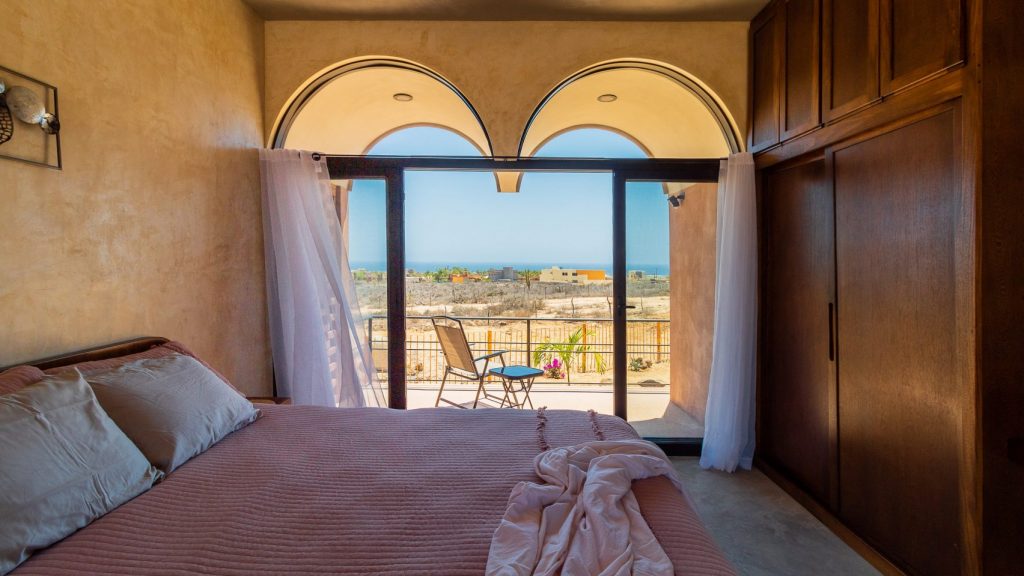
Casa Calafia in Mexico by Red Arquitectos
A large slightly elevated terrace partially screened by brick lattice surrounds the building on the ground floor. The lower level features two guest bedrooms, as well as an open-concept kitchen, living and dining room that faces the ocean. Outside, a set of stairs leads to the upper level, where the main bedroom is located, with its own ensuite and a wraparound terrace that provides views on three sides.
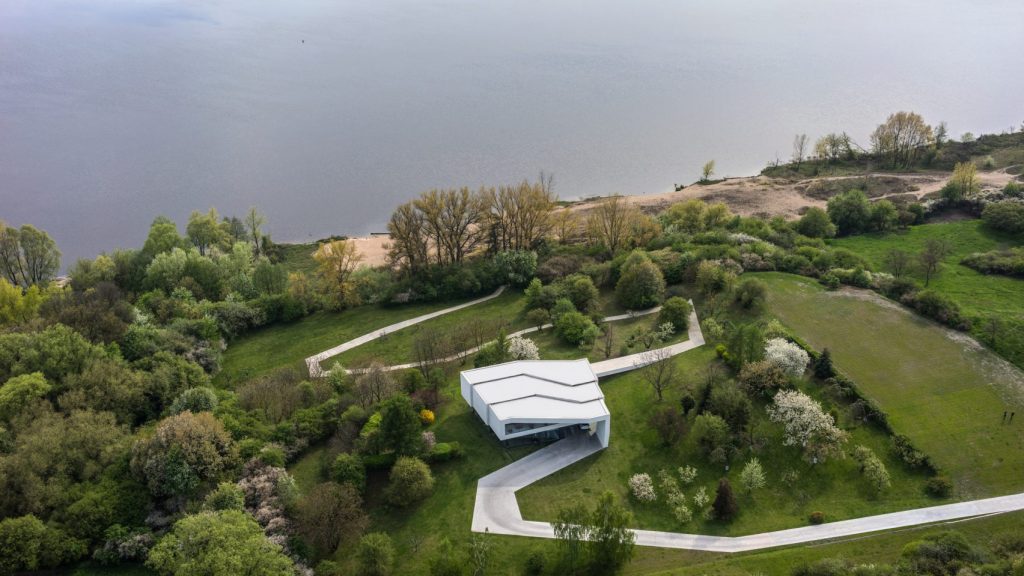
By the Way House by Robert Konieczny KWK Promes (also header image)
By the Way House developed by Robert Konieczny’s studio KWK Promes is characterized by a winding road of white concrete running from the entrance gate to the centre of a riverside plot in Poland, where it appears to fold up to create the ceilings, roof, walls and terraces of the building. In the middle of this concrete shell hides the exact replica of the client’s former apartment.
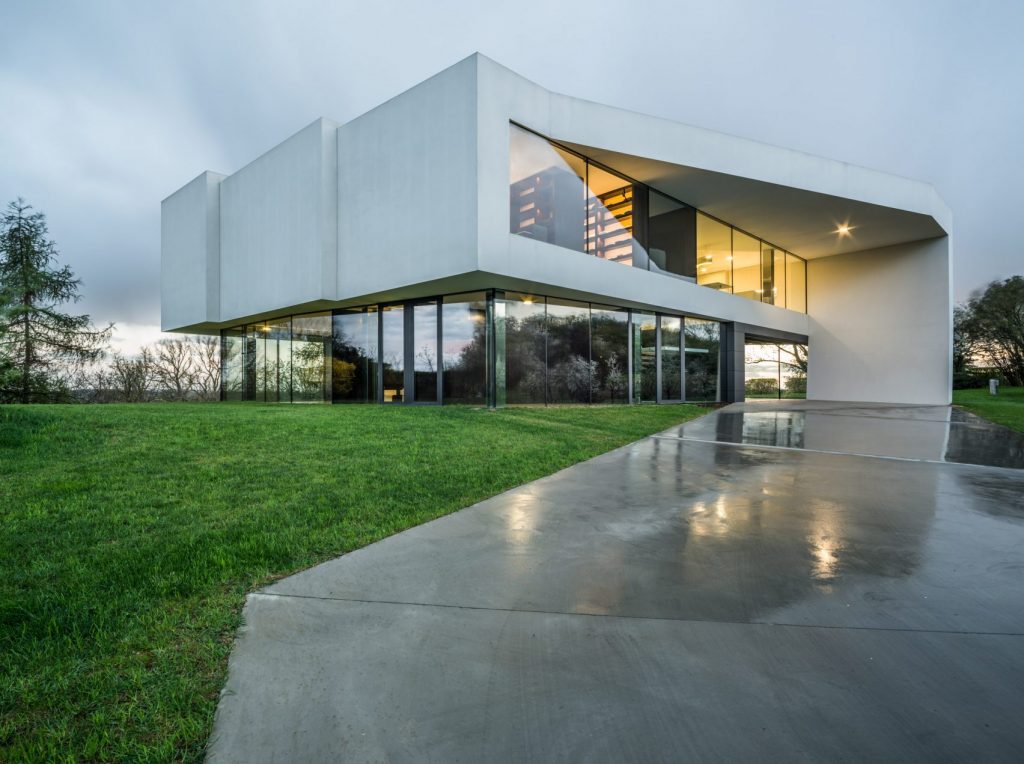
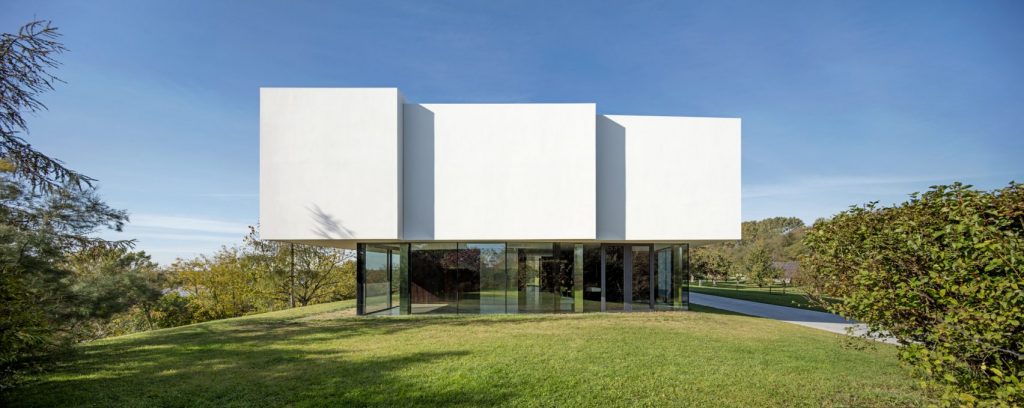
By the Way House by Robert Konieczny KWK Promes
By the Way house got its name from the road it sits within, and because the solution was found in the middle of the road. The client wanted to recreate a plan of his current apartment in his new home, but he also wanted to locate the residence in his large plot and connect it to a jetty on the Vistula river. This prompted the architect to make a road a design motif of the new building. The road continues on the opposite side of the house meandering down the slope towards the river.
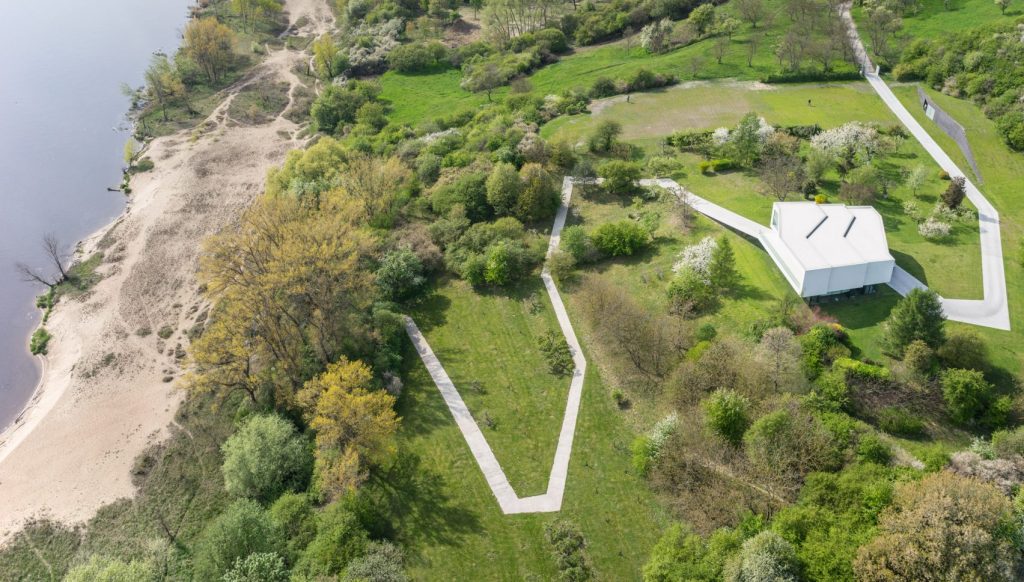
By the Way House by Robert Konieczny KWK Promes
The ground floor of the 599sqm residence contains a garage and a private gym. Huge sliding windows and full-height glazing on both levels offer spectacular views over the Vistula Valley. An observation deck on the terrace of the first floor morphs into a ramp that connects the house with the ground floor level.